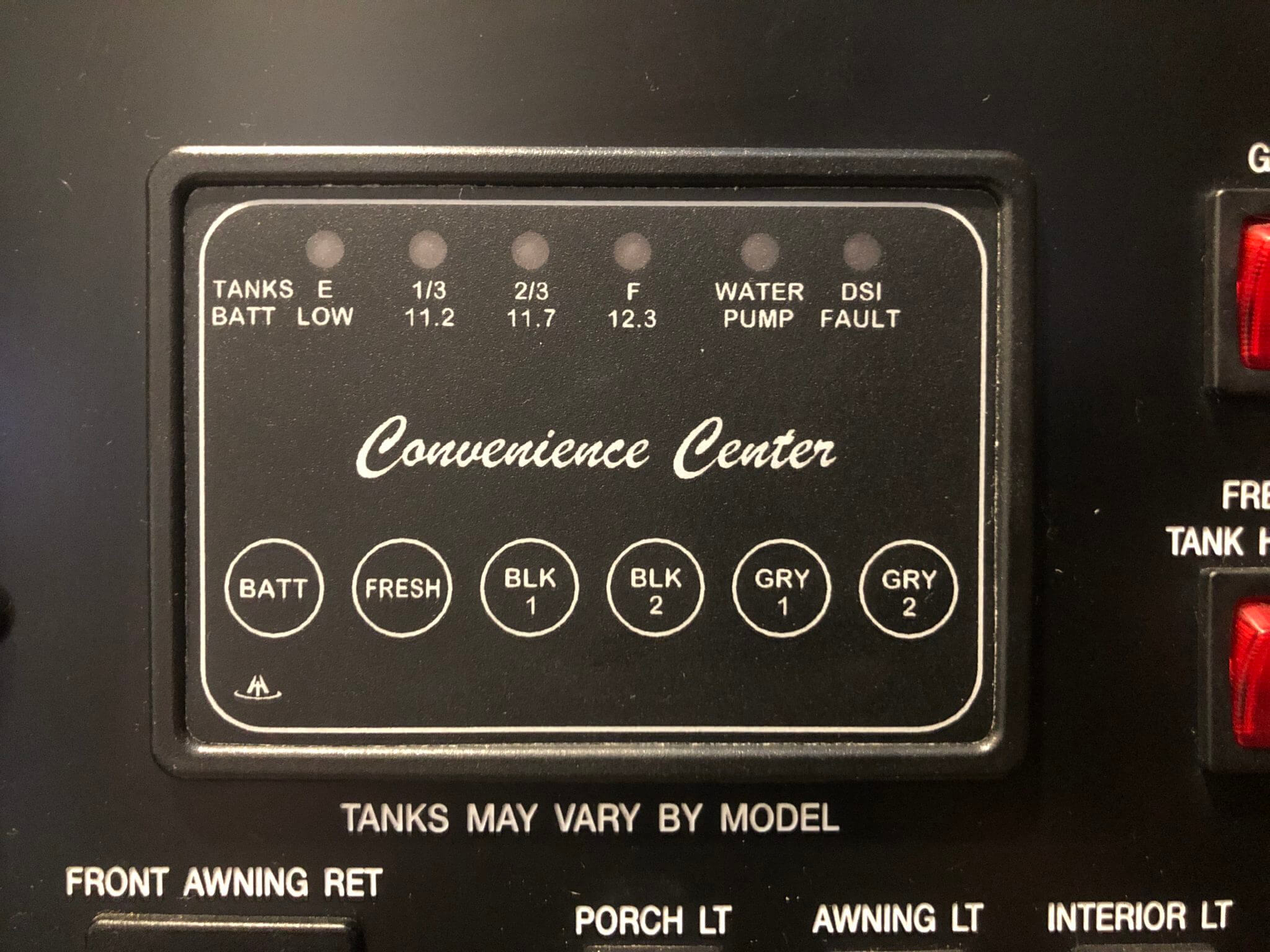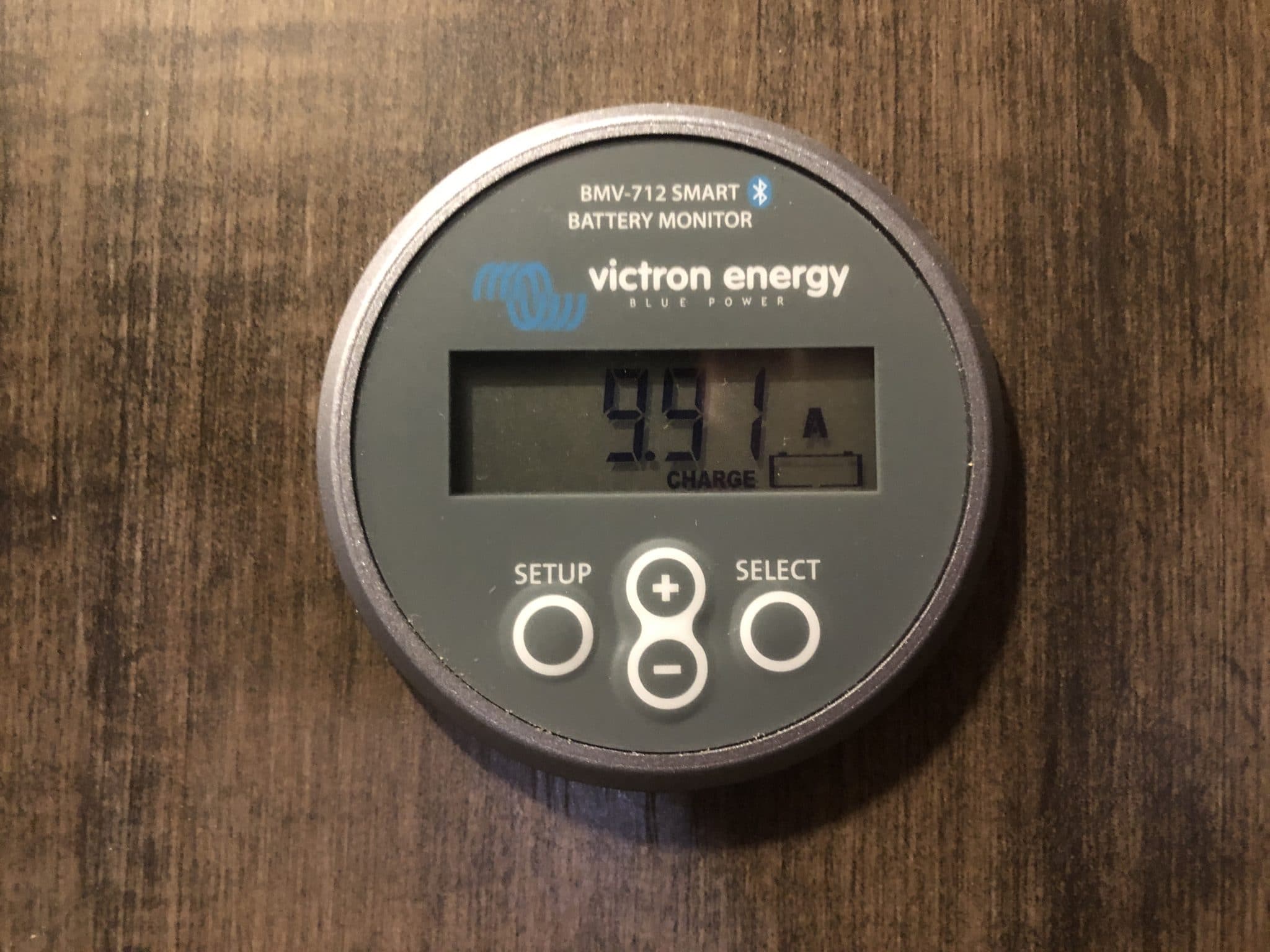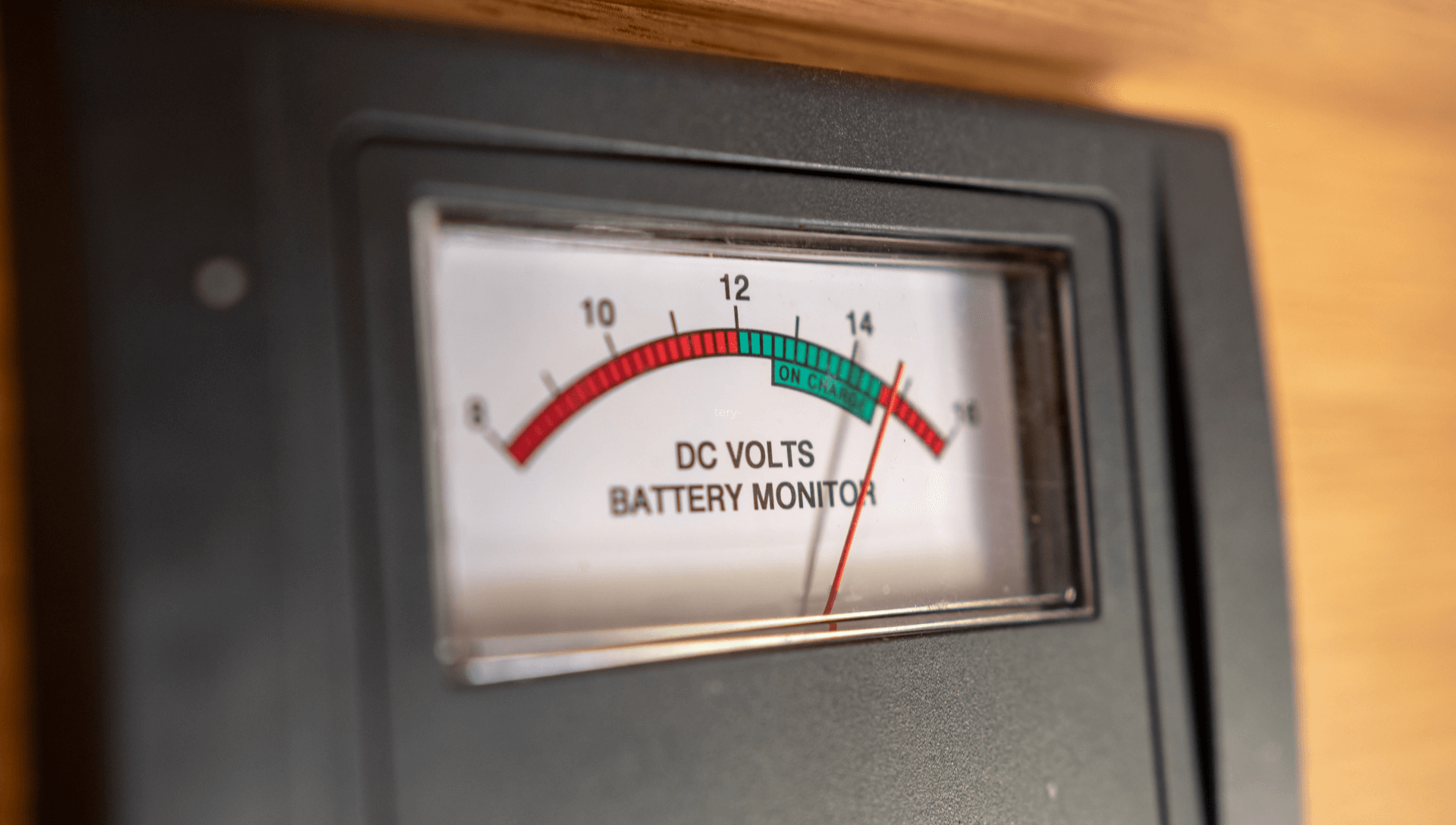Table of Contents Show
Similar to a speedometer and a fuel gauge cross mix, an RV battery monitor is essential for the maintenance of your rig. An RV battery monitor measures the energy stored and used in an RV battery bank.
How Does A Battery Monitor Work?
It is designed to tell you the charge level by measuring how much current is running into and out of your battery. Many RV battery monitors read the amperage (the strength of the current), voltage (the potential charge of the battery), and ampere-hours (the amount of current a battery can provide in one hour). Some even have a display reporting the percentage of the battery that has been used.
By taking these measurements, an RV battery monitor can tell you about the charge and load on the battery. It also tracks the number of charging cycles it experiences, based on its history.
An RV battery monitor also reports on the “health” of your electrical system’s main power source, making it an extremely useful asset.
A complete battery monitor should include a shunt, which is the actual brain of the system. It is a metal plate that is attached to the battery, with wiring that runs to the monitor display. The shunt relays the current and charges information to the display screen, which showcases the numbers representing the voltage. On more elaborate systems, the amp hours and amperage of the battery are monitored, as well.
Types of Battery Monitors
There are two main types of battery monitors for RV house batteries:

Voltmeter
This is a simple tool used mainly on lead-acid batteries that will measure only the voltage of the batteries. These are commonly installed on RVs by the manufacturer.
Although it doesn’t provide a ton of information, knowing your battery’s current charge is important in giving you an idea of how many appliances you can run.
Above all, it provides a nudging to charge your batteries.

Ammeter
This monitor will track the actual amperage leaving the batteries. It must be installed inline and is usually placed off the negative terminal of your battery.
All power must pass through it or you will not get an accurate reading. It provides multiple pieces of information on your battery, like amperage, voltage, remaining amp-hours, and the battery’s level of charge.
Best RV Battery Monitor
- Victron Energy BMV-712 Smart Battery Monitor (Grey) is a high precision smart battery monitor for systems with battery...
- Victron Energy BMV-712 features an additional input which can be programmed to measure battery temperature (temperature...
This much-loved battery monitor is popular for its full-fledged account of the basic functions of voltage, amp-hours, and current.
Additionally, it also displays the state of charge the battery is in, how much usage time is left, and the power consumption in watts. This makes it especially easy to use, as most appliances have the wattage they use listed right on them.
Therefore, you don’t have to do any math! Yet the most sought after feature of the Victron is its Bluetooth capabilities. With this smart monitor, you can actually keep track of the readings on your iPhone or Android phone.
Best RV Battery Monitor Buyer’s Guide
When looking for an RV battery monitor, there are several features to consider, including:
Price
Depending upon their sophistication, prices can range from $15 to over $200 on most battery monitors.
The least expensive monitors may only be a voltmeter, or can only read the current flowing in one direction (without installing an additional switch). Be aware of what you are buying.
Mounting
Some monitors mount on a wall inside your RV, so you will need to plan for wiring access to the spot chosen.
Others, like the SmartShunt, are attached directly to the battery, using your phone as the display, so no display mounting is necessary.
Convenience/Ease of Use
Are instructions easy to follow on the monitor display? Some have all readings on one display, but many of the more intricate battery monitors require different screens for each reading.
Included Accessories
Most monitors come with everything needed to install and mount. Some of the least expensive may not include wires — so be prepared for a visit to the hardware store to purchase the correct size of wiring before installation.
Battery Shunt
Make sure the monitor you purchase has a shunt included, as it is the central brain of the monitor. If it is not part of the package, chances are you are buying a voltmeter.
Display
Is the display easily readable and understandable? If you want to be able to look at the monitor once and get all of your information in that glance, purchase a monitor that displays all figures on one screen.
Mobile App
A few of the more expensive monitors utilize phone apps. This is convenient in knowing what your batteries are doing, even when you are away from your vehicle.
Notifications
Some battery monitors may also have a function that notifies you when the battery charge is low. This may be through the phone app or audibly through a noise inside the RV.
RV Battery Monitor FAQs
Advantages of using an RV battery monitor
With your entire electrical system dependent upon functioning batteries, it is a good idea to know the health of those batteries and how they are responding to ingoing and outgoing current. A battery monitor is the first step in keeping your RV system functioning at top levels.
How to install an RV battery monitor
Most battery monitors require installing a shunt on the battery, which is as simple as screwing it to a wire that connects to the negative battery post.
The next step is a little more contrived: running wires from the shunt to an inside wall, where you will also mount the monitor display.
Some users would prefer mounting the display in the power bay close to the batteries, and that makes this step much simpler.
The actual process just requires screwing the monitor onto sturdy wallboard and popping the cover over the display, wherever you choose to mount it.
How to use an RV battery monitor
Readings on battery monitors vary greatly by brand. Many have all readings on one screen, where you can see the amp-hours, voltage, and amperage.
Others require scrolling through each reading separately. Once installed, many of these displays have a menu of functions, allowing you to program what you want to see.
Follow the included directions for an easy setup, then you will have access to your system, monitoring the time left on your battery, its current charge and state, and its power consumption.
Last update on 2024-12-30 / Affiliate links / Images from Amazon Product Advertising API








Very informative write-up. My wife and I are 3rd-time RV owners. Our most recent RV has a solar setup on it. I am planning on putting in a second battery and monitor. I have never had solar on an RV before. One question that I have is the limitations of a monitor. In other words how many batteries will one monitor handle? Is it just limited by how many amps the shunt can handle?